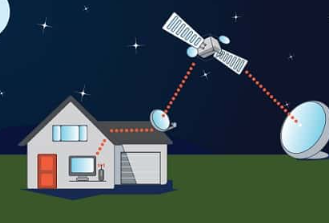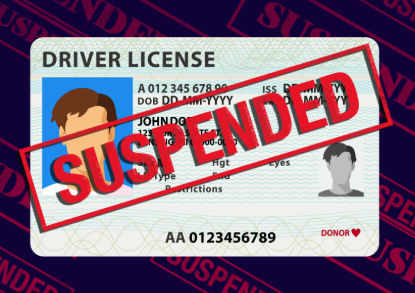This guide reveals the biggest student loan traps and strategies to protect your financial future and navigate repayment.
1. Falling for “Too-Good-to-Be-True” Private Loans
The Trap: Private lenders often market loans with flashy perks like “0% APR for 6 months” or “guaranteed approval.” While appealing, these terms typically hide sky-high interest rates after the honeymoon period and lack federal protections like income-driven repayment (IDR) plans or forgiveness options.
How to Avoid It:
• Prioritize federal loans first (Direct Subsidized/Unsubsidized, PLUS, FFEL). They offer borrower defense to repayment (BDRP), automatic enrollment in IDR plans, and tax-free forgiveness paths.
• If you must take a private loan, compare rates with federal PLUS loans and ensure the lender is **CFPB-certified**. Avoid loans requiring cosigners unless absolutely necessary.
2. Ignoring Your Loan Type
The Trap: Not all federal loans are created equal. For example, Direct Subsidized Loans forgive interest while you’re in school, while FFEL Loans may have less favorable terms under Biden’s administration. Mixing them up can lead to unexpected costs.
How to Avoid It:
• Use the Loan Simulator on the U.S. Department of Education’s website to compare repayment outcomes for different loan types.
• If you have legacy FFEL loans, refinance them into Direct Consolidation Loans to access modern IDR plans and forgiveness benefits.
3. Overlooking Deferment/Forbearance Risks
The Trap: Pausing payments via deferment or forbearance might provide short-term relief, but interest continues accruing—often at double the standard rate during COVID-19 emergency periods. This can balloon your debt exponentially.
How to Avoid It:
• Use deferment/forbearance only as a last resort. Exhaust alternatives like income-driven repayment plans (IDRs), which cap payments at 5-20% of discretionary income and forgive remaining balances after 20-25 years.
• If you’re unemployed or facing hardship, apply for automatic IDR enrollment through your servicer or use the Loan Status Dashboard to explore options.
4. Missing Out on Free Debt Relief Tools
The Trap: Many borrowers waste thousands on pricey debt consolidation services or “lawyers” claiming to secure forgiveness. In reality, free resources from the government can do the same—or better.
How to Avoid It:
• Automate your payments via AutoPay to avoid late fees (many servicers offer a 0.25% interest discount).
• Use the Department of Education’s Loan Servicer Lookup Tool to ensure you’re working with an accredited provider.
• For forgiveness seekers, complete the Free Application for Federal Student Aid (FAFSA) and submit the PSLF Certification Form online—no third-party help required.
5. Falling for Student Loan “Scams”
The Trap: Scammers prey on borrowers’ desperation, promising “guaranteed forgiveness” for a fee or urging you to pay them instead of your lender. In 2022, the FTC reported **$1.2 billion in student loan scams**.
How to Avoid It:
• Never share your Social Security number or payment details with unsolicited callers/emailers.
• Verify any organization claiming to offer forgiveness by visiting the official studentaid.gov site directly.
• Report suspicious activity to the FTC at reportfraud.ftc.gov.
6. Underestimating the Tax Implications
The Trap: Student loan interest is **tax-deductible**, but few borrowers claim this credit. In 2023, the maximum deduction is $2,500 for unmarried filers earning under $95,000.
How to Avoid It:
• File Form 1098-E with your tax return to claim the interest deduction. Many lenders now auto-send this to borrowers.
• Use tax software like TurboTax or H&R Block, which guide you through the process seamlessly.
7. Procrastinating on Repayment Strategy
The Trap: Waiting until after graduation to tackle loans often leads to default. The average borrower takes 7 years to pay off their debt, accruing $32,000 in interest alone.
How to Avoid It:
• Start paying while still in school (even $50/month reduces total interest by thousands).
• Use the PAYE vs. REPAYE vs. IBR Calculator to choose the IDR plan that minimizes your lifetime payments. For example, PAYE caps payments at 10% of discretionary income and forgive balances after 20 years for undergraduate loans.
• Prioritize high-interest debt first. Use the debt avalanche method to target loans with rates above 6-7%.
Your Action Plan: 5 Steps to Take Today
-
Audit Your Loans: Log into studentaid.gov to confirm loan types, balances, and servicers.
-
Enroll in IDR: Use the Loan Simulator to find the best plan for your income.
-
Automate Payments: Reduce missed payments by setting up autopay with a 0.25% discount.
-
Explore Forgiveness: Complete the FAFSA and submit required forms for PSLF, Teacher Loan Forgiveness, or Income-Driven Forgiveness.
-
Stay Informed: Follow the Department of Education’s social media accounts and subscribe to their newsletter for updates on policy changes.




